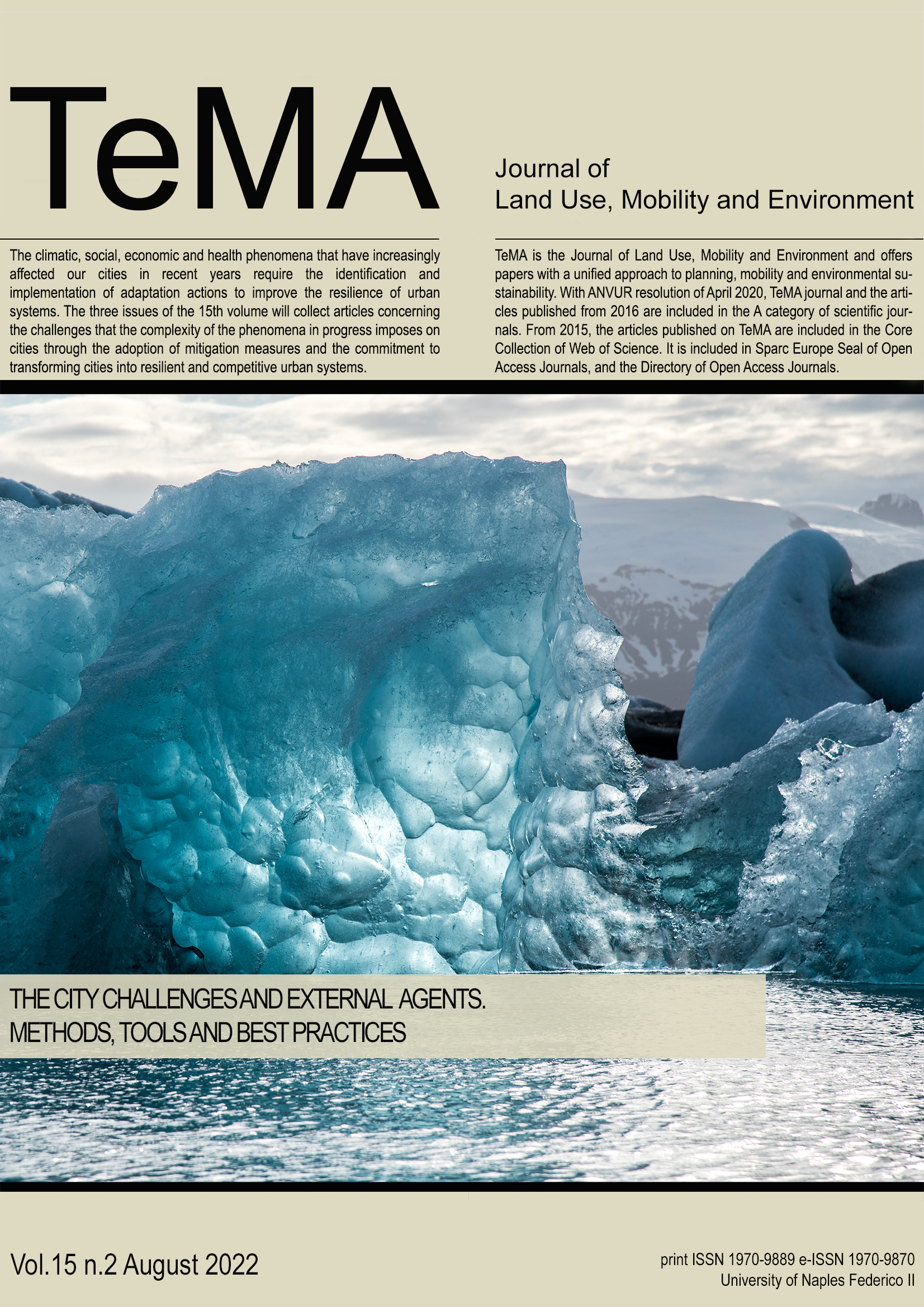The Structural Plan’s sustainability in coastal areas. A case study in the Tyrrhenian coast of Calabria
DOI:
https://doi.org/10.6093/1970-9870/8891Keywords:
Structural Plan, Coastal Areas, ICZM ProtocolAbstract
Sustainable planning in coastal areas must integrate environmental protection actions and development actions addressing settlement policies and the location of functional and tourist infrastructure and services that are particularly relevant from a socio-economic point of view. In Italy, coastal planning is fragmented between state, regional and municipal competences. All Italian municipalities have the task of drafting the plan that outlines the strategic scenarios and the structural choices for the governance of the territory under their jurisdiction. We therefore wonder how this general plan can incorporate the specificities of coastal territories starting from the elaboration of the knowledge framework to define a sustainable plan project. To answer this question, we focus on the Calabrian regional territory, which hosts 10% of the national coastal heritage. The paper presents and discusses the procedural and content aspects related to the elaboration of the Preliminary Document of the Structural Plan of a municipality located on the coast of the Tyrrhenian Sea to draw general conclusions from the local experience useful for planners.
Downloads
Downloads
Published
How to Cite
Issue
Section
License
Authors who publish in this journal agree to the following:
1. Authors retain the rights to their work and give in to the journal the right of first publication of the work simultaneously licensed under a Creative Commons License - Attribution that allows others to share the work indicating the authorship and the initial publication in this journal.
2. Authors can adhere to other agreements of non-exclusive license for the distribution of the published version of the work (ex. To deposit it in an institutional repository or to publish it in a monography), provided to indicate that the document was first published in this journal.
3. Authors can distribute their work online (ex. In institutional repositories or in their website) prior to and during the submission process, as it can lead to productive exchanges and it can increase the quotations of the published work (See The Effect of Open Access)


